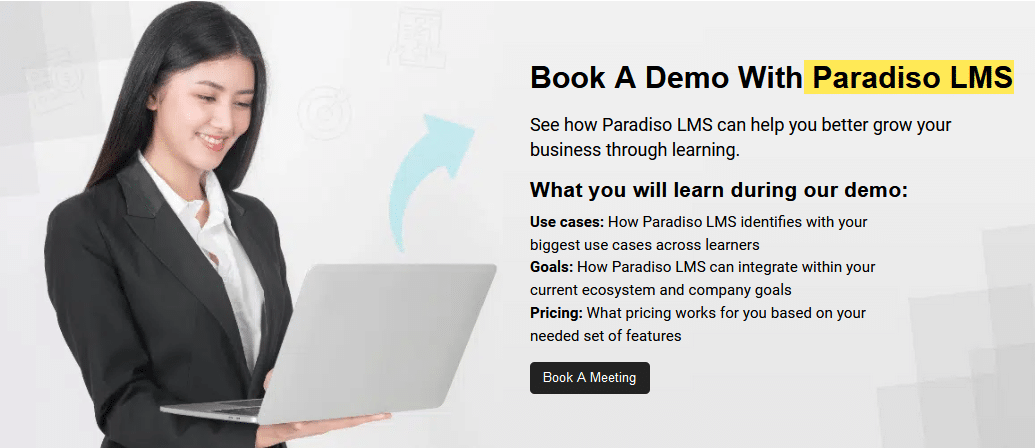Higher education institutes must handle multiple disciplines under one roof, and this is only possible with the help of technology. Digital platforms like the Course Management System streamline the delivery of educational content, enhance communication between instructors and students, and provide tools for tracking and assessing student performance.
What Is a Course Management System? And Importance of Course Management system for Higher Education

Course management systems facilitate flexible learning environments, enabling access to course materials anytime and anywhere, thus supporting diverse learning styles and schedules. They further promote collaborative learning through peer assessments, group projects, and discussion forums. By integrating various educational technologies, CMSs have increased the effectiveness, accessibility, and interactivity of higher education, which has improved learning outcomes and student engagement.
What Is a Course Management System?
What is a course management system? A course management system (CMS) is a digital platform made to make managing, recording, monitoring, reporting, and delivering training or educational courses or programs easier.
In addition to giving instructors only one place to generate and manage course content, assignments, and assessments, these systems allow students to access course materials, turn in work, and interact with classmates and teachers. CMSs are vital tools for modern education since they improve teaching and learning processes. They offer various capabilities, such as multimedia integration, online discussions, and grading tools.
An Online Course Management System Helps the Institute in Following Ways
- It is a one-stop place where students can submit assignments and papers
- It contains a grade book that aids in updating information and verifying student performance for both teachers and students.
- Facilitates the development of an efficient lesson plan and course administration.
- Promotes group conversations and facilitates communication between students and teachers.
- Additionally, the online course management system is integrated with other programs, including learning management systems and student management systems, to import and export the data needed by other departments.
Purpose Of Course Management System
The primary purpose of a Course Management System (CMS) in higher education is to streamline the administration and delivery of educational content. By centralizing course materials, assignments, and assessments, CMSs make it easier for instructors to manage their courses and for students to access necessary resources. This digital organization enhances efficiency and ensures that all students have equal access to the course content, promoting a more inclusive learning environment.
Another significant purpose of a CMS in higher education is to facilitate flexible and personalized learning experiences. CMSs allow students to engage with course materials at their own pace and on their own schedule, accommodating diverse learning styles and needs. This flexibility is particularly beneficial for non-traditional students, such as those who are working or have other commitments. Additionally, CMSs often include tools for tracking student progress and performance, enabling instructors to provide targeted support and interventions.
Insider Tips To Choose The Perfect Learning Management System
Download now to get insider tips on choosing the perfect Learning Management System!

Why Course Management System is a must for today’s educational institutions
In today’s digital era, almost every educational institute is taking advantage of technology to keep students engaged and motivated. A course management system is an amazing tool to manage diverse courses seamlessly. Here are some key benefits an educational institute can have using a course management system:
1. Centralized Learning:
Course management systems (CMS) provide a single platform where all course materials, such as lectures, readings, and assignments, are organized and easily accessible. This centralization reduces confusion and ensures that students can find everything they need in one place.
2. Enhanced Communication:
CMSs offer various communication tools, including messaging, forums, and announcements, facilitating efficient and timely communication between instructors and students. This ensures that questions are answered quickly, and important updates are communicated effectively.
3. Accessibility:
With 24/7 access to course materials, CMSs accommodate diverse student schedules and learning preferences. Students can review lectures, complete assignments, and participate in discussions at their own pace, enhancing flexibility and learning outcomes.
4. Efficient Assessment:
CMSs automate many aspects of assessment, such as quiz administration, assignment submission, and grading. This not only saves time for instructors but also provides timely feedback to students, which is crucial for their learning process.
5. Progress Monitoring:
Instructors can track student performance and progress through detailed analytics and reporting features. This allows for early identification of students who may need additional support and enables data-driven decision-making to improve teaching strategies.
6. Collaborative Tools:
CMSs include tools like discussion boards, group workspaces, and peer review systems that promote interaction and collaboration among students. These tools help build a sense of community and enhance the learning experience through shared knowledge and teamwork.
Insider Tips To Choose The Perfect Learning Management System
Download now to get insider tips on choosing the perfect Learning Management System!

7. Resource Integration:
CMSs support the integration of multimedia content, such as videos, podcasts, interactive simulations, and external educational tools and resources. This enriches the learning experience by providing diverse and engaging materials.
8. Cost-Effective:
By reducing the need for physical materials and streamlining administrative tasks, CMSs can lower operational costs for educational institutions. This efficiency allows institutions to allocate resources more effectively and focus on enhancing educational quality.
9. Scalability:
CMSs are designed to grow with the institution. Whether catering to a small class or an entire university, these systems can scale to meet varying demands, ensuring they remain effective and efficient regardless of the size of the user base.
Course Management System Vs Learning Management System
While learning management systems (LMS) and course management systems (CMS) are sometimes synonymous, they serve different functions and characteristics. CMS and LMS are contrasted here:
Course Management System (CMS)
- Focus: Primarily on organizing and delivering course content.
- Content Management: Provides tools for uploading, managing, and organizing course materials like lectures, readings, and assignments.
- Communication: Includes basic communication tools such as messaging, announcements, and discussion forums.
- Assessment: Offers basic assessment tools like quizzes, assignments, and grading.
- User Interface: Generally simpler and easier to use, focusing on the needs of individual courses.
- Integration: May have limited integration with other educational tools and systems.
- Usage: Often used in higher education and smaller institutions where the primary need is to manage course content and communication.
Learning Management System (LMS)
- Focus: Broader scope, encompassing the entire learning process, including content delivery, tracking, and reporting.
- Content Management:Advanced tools for creating, managing, and delivering a wide range of learning content, including multimedia and interactive materials.
- Communication: Robust communication and collaboration tools, including chat, video conferencing, and social learning features.
- Assessment: Comprehensive assessment capabilities, including detailed analytics, tracking, and reporting of learner progress and performance.
- User Interface: More complex, offering a wide range of functionalities to cater to diverse educational needs.
- Integration: Extensive integration with other systems, such as Student Information Systems (SIS), Human Resource Systems (HR), and third-party educational tools.
- Usage: Widely used in corporate training, K-12 education, higher education, and large institutions where comprehensive learning management is required.
Final thought
A multidisciplinary education approach can easily manage many students using the course management system. The new educational framework promotes using ICT to improve teaching and administrative practices in educational institutions. CMS is crucial to the institute’s efforts to digitize its core functions and assist in setting up an effective management system.
So, what is a course management system is somewhat clear now. CMSs enhance the educational experience by offering tools for collaboration, progress tracking, and flexible access to resources, making them essential for modern education. While learning management software assists in managing tests, courses, classes, and various other issues, course management systems are primarily concerned with providing students with educational content and courses.












